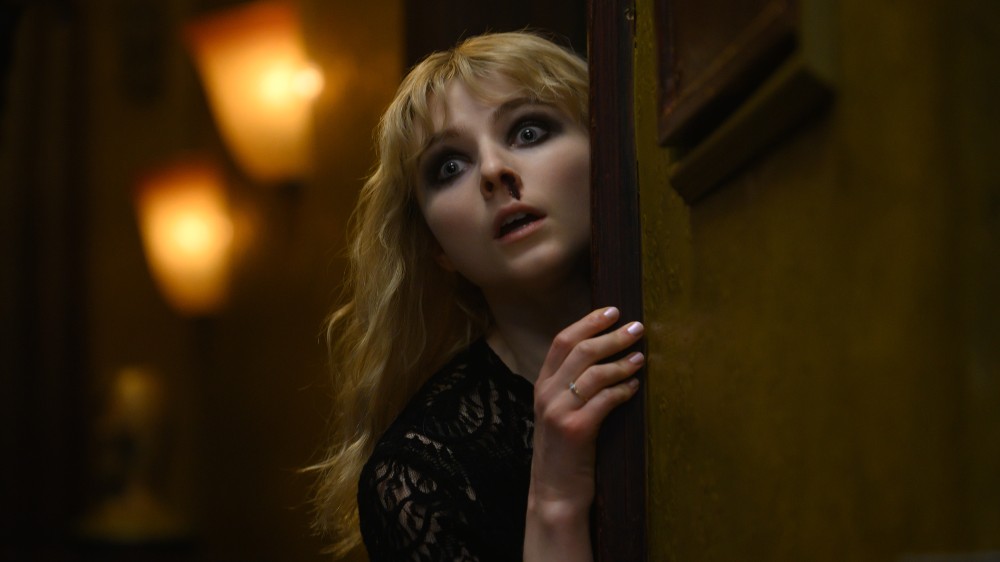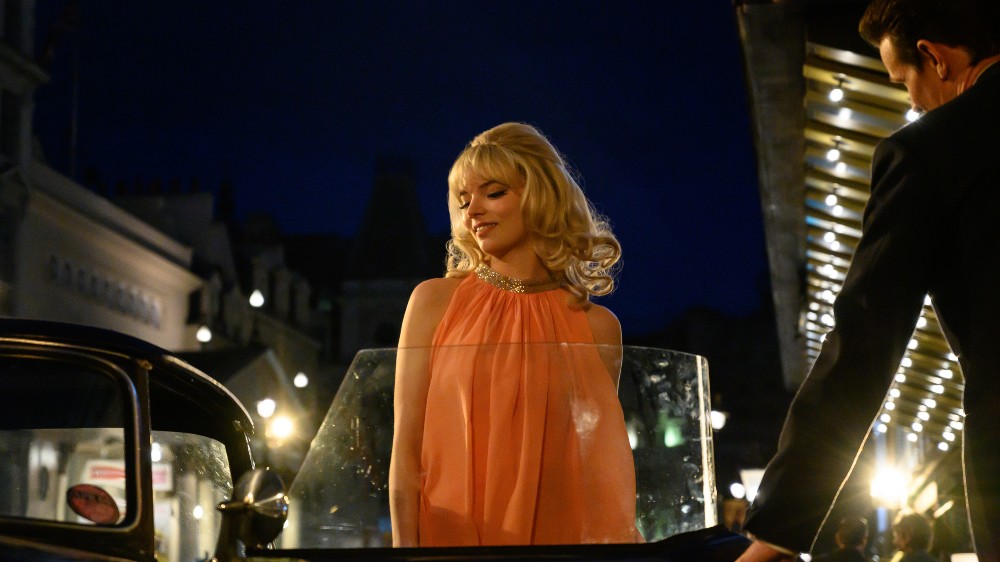
Filmmaker Edgar Wright has made a name for himself with his stylish, cleverly original offerings that span a multitude of genres. From the comedic Shaun of the Dead and The World’s End, to the serious and action-packed Baby Driver, Wright has typically combined a unique aesthetic with original content to produce memorable, entertaining films.
His latest offering, Last Night in Soho, a futuristic thriller that looks back at the 1960s, is missing one of these two critical elements. Though Wright douses the movie in effective technical auras (the costumes and cinematography particularly stand out) the original content is simply not there. In its stead is a messy, convoluted, and ultimately uninteresting plot about a troubled young girl connected to a troubled young girl, the end result of which is nothing more than trouble.
We start with the innocent-faced Eloise (Thomasin McKenzie), who is chasing her dream of becoming a fashion designer. She gains admission to a London fashion school, with the support of her doting grandmother. Eloise’s mother is not with us in flesh, but you see her image reflected in mirrors Eloise peeks into, Harry Potter style. Eloise has some sort of connection to the netherworld, which will come in handy to the director but not necessarily to Eloise when she moves into a stylish Soho flat moments later.
Eloise is disturbed by a nightly dream featuring the mysterious singer/dancer Sandie (Anya Taylor-Joy), who, by the looks of Production Designer Marcus Rowland’s meticulously designed sets, inhabits the 1960s. Sandie dabbles between nightclubs, the Café de Paris, the eerie streets of the London of yore, and the room that Eloise inhabits in the present day, rented out from a crabby old lady (Diana Rigg, in her last onscreen role). Each set is voluminous and rich, even those not set in the 1960s, such as the library in Eloise’s school. Each provides a thick veneer over the thin proceedings, something to pay attention to when the characters engage in one foolish pursuit after another. Rowland combines his work with that of DP Chung-Hoon Chung to play with mirrors, with reflections, with the juxtaposition and the simultaneous connection between Eloise and Sandie, not quite mysterious but at the very least intriguing.

Chung’s lighting does a lot of work for Last Night in Soho. The telltale marker of Eloise’s room is a bright neon light that alternates between mostly red and sometimes blue, telegraphing the idea of brothel-like danger, of warning. Though perhaps obvious, this simple trick gives the scenes a welcome familiarity to them, and the idea that reality and fiction intermesh between the blinking on and the blinking off of the lights.
Most effective of all, however, are Odile Dicks-Mireaux’s costumes, centered mostly around the central decade’s style but also in the present day. Wright is clearly a fan of the 60s, even showing us the imagined premiered of one of Sean Connery’s first James Bond movie, an amusingly timely reference. But Dicks-Mireaux is a student of the decade, too. She uses simple but recognizable designs, mostly on Sandie but also on the mysterious gentleman who enamors her (played by Matt Smith), to instantly signal to the viewer the moment in time in which the film is set. This permits Wright to weave essentially with no seams between the two settings. And, since Eloise becomes infatuated with Sandie’s memory and begins designing her dresses in the present, the costumes, much like the light, provide a quickly familiar post to which the viewer can comfortably return when the rest of the film abandons her.
Unfortunately for this collection of clearly talented and mostly unsung technicians, Wright’s story really leaves behind any semblance of normalcy or rationality. Signs that Wright does not know what to do with his idea abound. He resorts to the trope of a character almost running into traffic no fewer than three times, an unfortunate crutch (that should be summarily retired from any serious screenplay) that does little to connect the movie and much to make the audience exasperated with it. The story clearly styles itself as a feminist revenge tale of sorts, but then confuses the messages, the villains, the heroes, and the heroines.
The talented Ms. McKenzie is left to carry the weight of a character who frustratingly continues to trust the instincts she professes not to trust, to follow the leads that lead her astray time and time again. Ms. Taylor-Joy does her best with the most interesting character, but not even her voluminous acting talents are enough to save a movie that has little in the way of a sympathetic plot, or even a believable one. It’s not that ghosts are unbelievable—specters are totally fine as the heart of a whodunnit mystery—it’s that bait-and-switches have to make sense to be tolerated by even the most tolerating audiences, even by those of us who are perfectly fine to hear about phantasmagorical appearances and occurrences. Perhaps the problem is as simple as the fact that Sandie’s plight comes too late into the film. Before it, we simply witness tidbits and pieces about her difficult but unexciting life. After that, the movie quickly spins out of controls as it tries to keep you guessing as to what happens but succeeds only in keeping you wishing that the proceedings will come to an end.
By the time the third act rolls around, Last Night In Soho fully losses grips with reality, just as its protagonist does. You can see it coming from miles away. A movie built around a single trick—the idea that someone can commune with ghosts, with the past, or with the undead—has nowhere to go but down, doomed by its own decision to tie its fate to a singularly unoriginal idea. What is most remarkable about Eloise’s foibles is that, as she keeps going madder, she keeps chasing after ghouls she knows are not there, or at the very least, that she knows better than to go after. Again, Eloise is a proxy for the self-confident director, who thinks that following his ideas, no matter how harebrained, down rabbit holes, is sure to lead somewhere interesting. It does not.
Grade: D
Last Night in Soho will hit theaters nationwide on Friday, Oct. 29.
All photos courtesy of Focus Features; Photographer: Parisa Taghizadeh.






